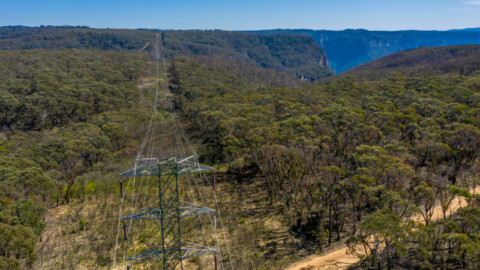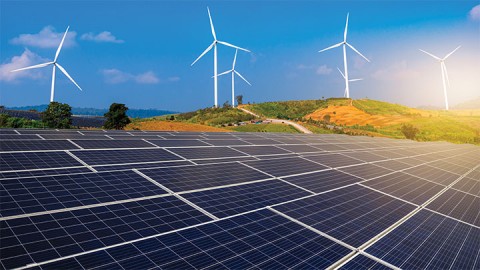by Andrew Dillon, CEO, Energy Networks Australia
Ensuring safe and reliable electricity is delivered to customers through the hotter months can be challenging, with bushfire mitigation a key focus. In the lead up to summer, vegetation management is an important safety tool.
What is network safety?
Network safety is like a tree with two main branches – one relating to people (occupational health and safety) and the other network and asset safety. Asset safety diverts into its own sub-branch of vegetation, bushfire, lightning and live line work1.
Vegetation
Networks have obligations to undertake vegetation clearance around powerlines to ensure community safety and power reliability. Maintaining clearance distance between vegetation and powerlines is fundamental to network safety and minimising the risk of bushfire.
Lesser clearance distance is required for low voltage (LV) lines, while greater clearance is needed for high voltage (HV) lines to maintain network safety. Pruning trees to minimise customer outage risk and bushfire starts are one of the largest recurring operational costs to networks2.
Networks working together with communities
In collaboration with councils, landholders and communities, SA Power Networks has developed a protocol for vegetation management near powerlines including a powerline-friendly list of tree species customised to different regions and environments, to ensure the right tree is planted at the right places.
SAPN is also working on alternatives to regular pruning, including tree removal and growth regulator trials.
Innovation in vegetation management
Networks are pursuing innovation in Light Detection and Ranging (LiDAR) as an asset inspection tool in vegetation management.
Similar to radar, LiDAR uses pulses of laser light to measure the distance from air to powerline and surrounding vegetation, as depicted in Figure 2.
LiDAR measures clearances and helps predict vegetation growth and replaces the need for costly manual surveying.
Bushfires
Burning vegetation that is close to powerlines may damage them, but vegetation management minimises this risk. What is harder to manage is wind-blown tree debris that originates outside of the clearance zone and some distance away from the powerline.
Single wire earth return (SWER) lines comprise thin and typically long conductors. Under certain fault conditions, such as when a tree falls over a powerline on a windy day, the SWER conductor is prone to breaking and can fall to the ground or into vegetation.
This can create a short circuit fault, which in the right conditions has a high risk of starting a bushfire.
Innovation in bushfire mitigation
In Victoria, AusNet Services and CitiPower Powercor have significantly changed their approach to vegetation and asset management, with very detailed and targeted programs of work directed at minimising bushfire risk from powerlines.
This has led to the installation of world-first technology, Rapid Earth Fault Current Limiters (REFCL), which quickly detect faults and reduce bushfire risk.
United Energy (with support from AusNet Services and CitiPower Powercor) is developing a new low-cost control tool known as ‘broken conductor fault detection technology’ on SWER powerlines for bushfire mitigation5.
Evoenergy in the ACT is also using a device known as Pulsecloser IntelliRupter for bushfire mitigation. It uses less energy to test for fault and reduces stress to the powerline.
The message to customers from networks is this: despite the significant investments to reduce bushfire risk, powerlines still pose a hazard and are not the only cause of bushfires.
If you live in a bushfire prone area, know the importance of having a bushfire preparedness plan. Make sure your plan is up-to-date and remember that on total bushfire days there is a higher than normal chance of power being off, so make sure your plan doesn’t rely on electricity such as a grid-connected electric water pump for firefighting.



















